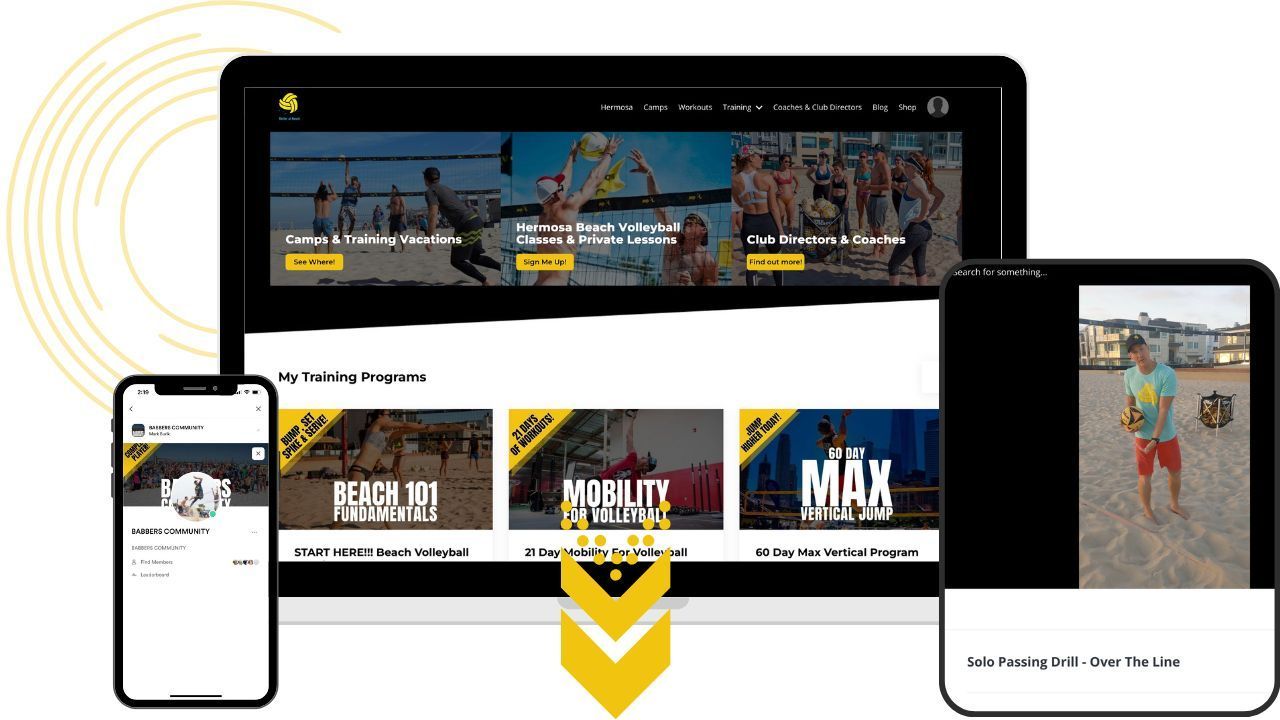
The BEST Agility Drills for Volleyball Players | Complete Workout
The Ultimate Guide to Agility Drills for Volleyball
Introduction
Agility is crucial for volleyball players, whether you're playing on hardwood, sand or even grass! It's the ability to change body positions swiftly and efficiently, which directly impacts performance on the court. This guide focuses on how agility drills can help volleyball players and introduces our 60-Day Strength, Plyo & Conditioning Program for Volleyball Players. Additionally, we'll offer three free vertical jump and agility workouts for those eager to enhance their game.
Why Agility Matters in Volleyball
The Importance of Agility for Volleyball
Beach volleyball demands constant starts, stops, and quick direction changes on an unstable surface. Players need to balance control, coordination, and speed while tracking fast-moving balls and executing plays. Training agility for beach volleyball ensures that players can move quickly and efficiently, keeping the ball in play and executing powerful spikes.
Surface Challenges
The movement on sand is different from that on hardwood or grass, which affects a player's balance and agility. Deceleration is easier due to the sand's cushioning effect, reducing stress on ligaments and tendons. This explains why beach volleyball players often have longer careers compared to those in other sports.
Playing Scenarios
Agility training helps players prepare for real-game scenarios:
- Moving to receive serves and tracking the ball to make a pass.
- Executing a slow-to-fast approach for spikes.
- Quick movements to dig balls and respond to offensive attacks.
Blockers rely heavily on agile footwork to shuffle and position themselves effectively, while defenders need quick reflexes to track and dig balls.
Key Agility Drills for Volleyball
High-Intensity Interval Training (HIIT)
Incorporate HIIT with agility drills to simulate the high-intensity bursts needed in a volleyball match. Alternate between explosive drills and rest to mimic gameplay.
Ladder Drills
Use ladder drills to improve foot speed and coordination. These drills can include various patterns such as high knees, side shuffles, and hops to target different agility aspects.
Plyometric Exercises
Plyometric exercises like box jumps and squat jumps improve vertical leap and explosive power, essential for blocking and spiking.
Incorporating Agility Drills into Your Training
Try "The Octopus Drill"
View this post on Instagram
Tailored Workouts
Our 60-Day Strength, Plyo & Conditioning Program for Volleyball Players is designed to help you improve agility, speed, and strength. It includes exercises that mirror in-game situations, ensuring you're well-prepared for matches.
Surface-Specific Training
For indoor players, practice agility drills on hardwood to simulate game conditions. Beach players should train on the sand to acclimate to its unique challenges.
Rest Ratios
Beach volleyball demands short bursts of effort followed by rest. Train with a 1:8 work-to-rest ratio to reflect this dynamic and optimize recovery between sets.
Get Started with Free Workouts
We're offering three free vertical jump and agility workouts to kickstart your training. Sign up for our The Complete Player Program to access our 60-Day At-Home Max Vertical Jump Training Program, skill courses, and more. It includes workouts, drills and tutorials like this one:
4 Easy Agility Drills for Volleyball Players
Conclusion
Agility is a cornerstone of successful volleyball play. By incorporating these drills and joining our 60-Day Strength, Plyo & Conditioning Program, you can improve your agility, speed, and overall performance. Join us in our pursuit of volleyball excellence, and don't miss out on our exclusive free workouts.
Contact Us: For training camps, private lessons, and volleyball vacations, reach out to [email protected]. We're here to help you become the best volleyball player you can be.
Join our email list and Get your FREE Drill Book with 36 Essential Drills for Beach Volleyball Players > www.betteratbeach.com/freebeachvolleyballdrillbook
Want a sample of our programs? Give our Completely Free 3 Workouts for an Increased Vertical Jump a try.





